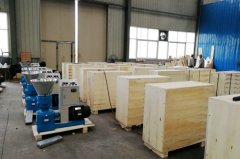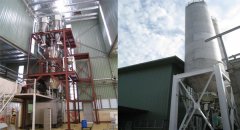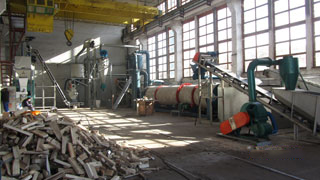Calorific value of biomass compared with other fuels
Biomass molding fuel is made from agriculture and forestry residues. It boasts high calorific value and sufficient burning. As a clean and renewable energy with low carbon, biomass fuel plays an important role in biomass burner and industrial boiler. Biomass fuel features long combustion time, high burning rate, high cost-efficiency, with no pollution to environment, which is an excellent substitute for traditional fossil fuel.
Biomass materials are processed by cutting, crushing, impurity removing, screening, mixing, modulation, extruding, drying, cooling, and packing, and made into biomass briquettes or pellets. According to national policy and environmental standard, burning bulky biomass materials directly is not allowed in city. But when processed into biomass molding fuel, the moisture and ash contents are adjusted and they become clean fuel which can be burned directly.
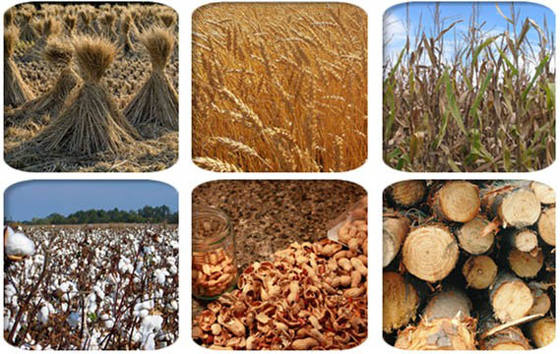
Advantages of biomass fuel
Low cost and high calorific value
The calorific value of biomass fuel is high, and the cost is far less than oil. What’s more, it is a clean energy advocated by government to take the place of petroleum, which has vast market scope.
Clean and environmental friendly
The sulphur, ash and nitrogen content is far lower than coal and oil. Burning biomass fuel doesn’t generate smock or gas, with little carbon emission. For these reasons, biomass fuel wins the reputation of “green coal”.

High density & transport convenience
Molded biomass molding fuel is small in volume and large in density, which is convenient for store, transport and continuous use.
High-efficiency and energy saving
The volatile matter and carbon activity is high in biomass pellets or briquettes. The ash content is only 1/20 of coal. The combustion rate is up to 98%, with little waste heat in lime ash.
Wide adaptability
Biomass molding fuel are made for both home and industry use. They play an important role in industry and agriculture production, such as power generation, heat supply, industrial boiler, and household pellet stove.

The burning effect of biomass fuel
| Item | calorific value | volatile matter | sulpher | chlorine | ash | water content |
| value | 19.67 MJ/kg | 82.97% | 0.01% | 0.01% | 0.56% | 11.01% |
Calorific value of biomass and other fuels
| type | diesel | gas | heavy oil | electricity | Biomass fuel |
|---|---|---|---|---|---|
| caloric value | 10200kcal/kg | 8500kcal/m3 | 9500kcal/kg | 860kcal/kw | 4200kcal/kg |
| unit price¥ | 8.00 | 4.50 | 5.50 | 1.20 | 1.30 |
| 1kg biomass fuel equals | 0.41kg | 0.49m3 | 0.44kg | 4.88kw | 1kg |
| 1kg biomass fuel equals cost ¥ | 3.28 | 2.20 | 2.43 | 5.86 | 1.30 |
| energy-saving rate | 60.36% | 40.90% | 46.50% | 77.80% | - |
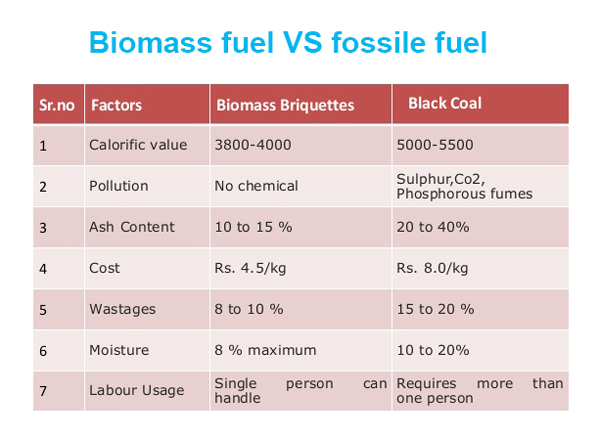
Power consumption of boilers with different fuels
| type | diesel(kg) | gas(m3) | electricity(kw/h) | biofuel(kg) |
|---|---|---|---|---|
| calorific value | 10200 | 8500 | 860 | 4200 |
| price ¥ | 8.00 | 4.50 | 1.20 | 1.30 |
| consumption per ton of steam | 69.00 | 76.90 | 780.00 | 170.00 |
| Cost per ton of steam | 552.00 | 346.00 | 936.00 | 221.00 |
Environmental index of biomass fuel and traditional fuel
| type | soft coal | light diesel oil | natural gas | liquefied petroleum gas | biomass fuel |
|---|---|---|---|---|---|
| SO2 | 14.2 | 11.8 | - | - | - |
| NOx | 4.3 | 4 | 0.5 | 0.5 | 0.47 |


